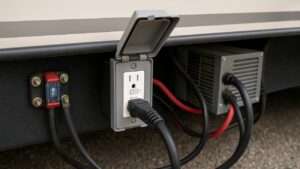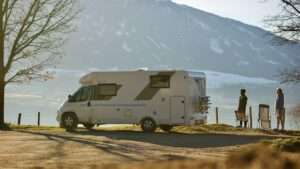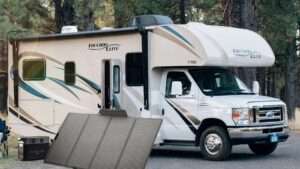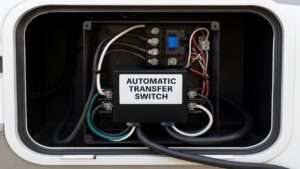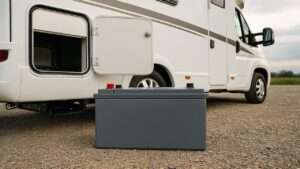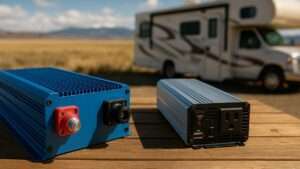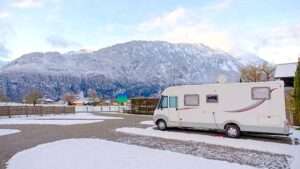CHOOSE YOUR ADVENTURE
Recent Posts
Yes, you can run your RV AC unit on lithium battery power, but it requires a large enough battery bank, a powerful inverter, and the right supporting equipment. Lithium batteries make this...
An RV GFCI keeps tripping when it detects moisture, a faulty appliance, wiring issues, or an electrical imbalance. This safety feature is designed to protect you from shock, but frequent...
A 30-amp RV breaker trips when demand exceeds its safe limit, when an appliance malfunctions, or when the pedestal provides poor power. This guide explains the most common causes, shows you...
Grounding ensures your RV’s electrical system has a safe path for fault current. At a campground, the pedestal already provides grounding. With a portable generator, you may need to create a...
The right RV inverter size depends on the total running and surge watts of the appliances you want to power at the same time. By adding up those numbers and matching them to your battery...
RV electrical systems keep you comfortable, but juggling shore power, a generator, and an RV inverter by hand can create risk and confusion. An Automatic Transfer Switch (ATS) handles the...
The difference between a 100Ah, 200Ah, and 300Ah RV lithium battery comes down to how much energy each can store and how long it can power your RV appliances and electronics. A higher...
The difference between pure sine vs modified sine inverters for RVs comes down to power quality and compatibility. Pure sine inverters create smooth, grid-like electricity that safely runs...
Lithium iron phosphate (LFP or LiFePO4) batteries need low-temp charge protection because charging below freezing can cause lithium plating, permanent capacity loss, and even safety risks...

